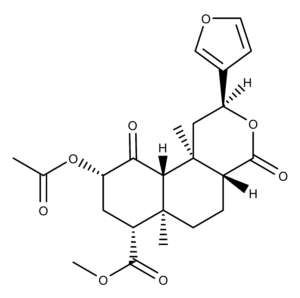Salvinorin A is the primary active compound in the plant Salvia divinorum (aka salvia). Salvia is a hallucinogenic/entheogenic plant native to Mexico. It is a member of the mint family and goes by other names such as “Diviner’s Sage,” “Mystic Sage,” and “Magic Mint.” 1
Salvia has been used for centuries by the Mazatec Indians of Oaxaca, Mexico, for creating religious and mystical visions. They also use the plant for treating diarrhea, rheumatism, and headaches.2
The Pharmacology of Salvinorin A
In 2002, Roth et al. found that salvinorin A had no action at the serotonin 5-HT2A receptor,3 considered by experts to be the principal target responsible for the effects of classic psychedelics.4 Further testing on a battery of 50 other receptors, transporters, and ion channels showed no activity.
However, their data indicated that salvinorin A “showed a distinctive profile” when compared to classic hallucinogens such as LSD (lysergic acid diethylamide). Specifically, salvinorin A displayed a high affinity as an agonist for the kappa opioid receptor (KOR). Roth et al. noted that based on published data and their own, salvinorin A has a higher potency than LSD and DOB (4-bromo-2,5-dimethoxyphenylisopropylamine).
Studies have shown that salvinorin A has physiological effects similar to other KOR agonists. These effects include analgesia, sedation, constipation, aversion, and depression.5–10
Salvinorin A has virtually no effects on humans when taken orally because of its quick metabolism in the gastrointestinal tract.11 But when it is smoked, the effects are quite apparent. At doses of 200-500 µg, users report visions lasting 30 minutes to two hours. Doses greater than 500 µg put subjects in an “uncontrollable delirium” where they are no longer aware of their surroundings.
The Chemistry of Salvinorin A
Salvinorin A is chemically unique among KORs because it lacks nitrogen that other KOR agonists have (e.g., morphine and ibogaine).
The Applications and Potential of Salvinorin A
In 2012, Fichna et al. reported that salvinorin A had analgesic and anti-inflammatory effects in a mouse model of colitis.12 These results suggest that the compound may have applications for treating gastrointestinal conditions.
In a 2017 review, Cruz et al. described the evidence for salvinorin A for treating a variety of mental diseases and conditions.13 These included depression, anxiety, Alzheimer’s disease, and schizophrenia. They also reviewed studies indicating the compound may have anti-depressant and anti-addiction effects.
In 2019, John and Renyu published a study suggesting salvinorin A may be effective for treating strokes.14 For example, their experiments found that the compound was a cerebral vascular dilator and protected against brain hypoxia and ischemia.
